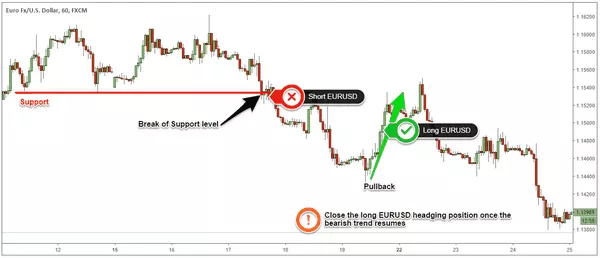In forex trading, swap is a common term used to refer to the overnight rollover interest rate that traders pay or receive for holding positions open overnight. Swap is charged when traders hold a position beyond the end of the trading day, which is typically at 5 pm EST. In this article, we will explore what swap is, how it works, and some key considerations to keep in mind when trading forex.
Swap is an interest rate differential between two currencies that a trader trades. When a trader holds a position overnight, they are essentially borrowing one currency to buy another. As a result, the trader may be required to pay or receive interest on the borrowed or bought currency.
The swap rate is determined by the difference in interest rates between the two currencies being traded. If the trader is buying a currency with a higher interest rate than the currency they are selling, they will receive a positive swap. Conversely, if the trader is buying a currency with a lower interest rate than the currency they are selling, they will be charged a negative swap.
-
Section 2: How Does Swap Work?
When a trader opens a position in the forex market, they are essentially entering into a contract to exchange one currency for another at a specific price. This contract has a set expiry date, which typically occurs at the end of each trading day.
If the trader decides to hold the position beyond the expiry date, they will need to rollover the position to the next trading day. This means closing the old position and simultaneously opening a new one at the current market rate.
When this happens, the broker will apply a swap rate to the position. If the trader is long the higher-yielding currency, they will receive a positive swap. If they are short, then they will be charged a negative swap.
The amount of swap charged or paid depends on the size of the position and the interest rate differential between the two currencies being traded. Swap is typically calculated on a daily basis and is automatically added or subtracted from the trader’s account.
-
Section 3: Key Considerations for Trading with Swap
If you are a forex trader, there are some key considerations to keep in mind when trading with swap:
Understand the impact of swap on your trades: Swap can have a significant impact on your trading performance, especially if you hold positions open for an extended period. Make sure you factor in swap charges when calculating your potential profits and losses.
Monitor interest rates:
Interest rates play a crucial role in determining swap rates. Keep an eye on central bank meetings and economic data releases that could influence interest rates in the currencies you are trading.
Choose a broker with competitive swap rates:
Different brokers offer different swap rates, so it is essential to choose a broker that offers competitive rates.
Use swap-free accounts:
Some brokers offer swap-free accounts, which do not charge or pay swap rates. These accounts are ideal for traders who follow the Islamic faith, as paying or receiving interest is prohibited.
Factor in swap rates when developing a trading strategy:
When developing a trading strategy, make sure you consider the impact of swap rates. It may be wise to avoid holding positions open overnight, or to focus on trading currency pairs with lower swap rates.
-
Section 4: Advantages and Disadvantages of Swap Trading
Like any other form of trading, swap trading has its advantages and disadvantages. Here are some of the key pros and cons:
1) Advantages:
1.Additional source of income:
Swap allows traders to earn additional income for holding positions open overnight.
2.Flexibility:
Traders can choose whether to pay or receive swap, depending on their trading strategy and market conditions.
3.Long-term trading opportunities:
Swap trading can provide long-term trading opportunities, allowing traders to benefit from interest rate differentials over extended periods.
2) Disadvantages:
1.Risk of losses:
Like any form of trading, there is always a risk of losses when trading with swap.
2.Impact on trading costs:
Swap can increase the cost of trading, especially if positions are held open for an extended period.
3.Limited choice of currencies:
Some brokers may not offer swap trading in all currency pairs, limiting the trader’s choices.
Conclusion:
Swap is a crucial aspect of forex trading that traders need to understand to make informed trading decisions. By understanding how swap works, monitoring interest rates, and factoring in swap charges when developing a trading strategy, traders can improve their chances of success. While swap trading has its advantages and disadvantages, it can be a useful tool for earning additional income and taking advantage of long-term trading opportunities.


